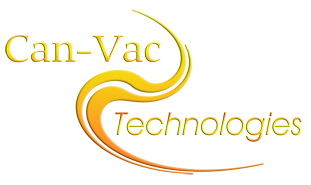 Can-Vac Technologies is a representative of A&N Corporation, a manufacturer of high vacuum components since 1965 offering researchers and laboratories an extensive line of standard high and ultra high vacuum components, as well as custom valves and process chambers. A&N products are designed to meet or exceed the standards required by industrial and academic users, such as those involved with thin film deposition, surface analysis, laser devices, cryogenics and the aerospace industry.
Can-Vac Technologies is a representative of A&N Corporation, a manufacturer of high vacuum components since 1965 offering researchers and laboratories an extensive line of standard high and ultra high vacuum components, as well as custom valves and process chambers. A&N products are designed to meet or exceed the standards required by industrial and academic users, such as those involved with thin film deposition, surface analysis, laser devices, cryogenics and the aerospace industry.
A&N Corporation High Vacuum Components
Vacuum Traps and Filters
Traps vs Filters
In a high vacuum setting, traps and filters may be installed on a vacuum foreline, but each has a different function:
Trap: A trap is a device that is designed to capture vapors and gases.
Filter: A filter is a device that is designed to capture or reduce particulates, dust, smoke, and aerosols. A common filter function, for example, is to capture the oil mist (an aerosol) that is discharged from the outlet of an oil-sealed rotary vane mechanical pump.
Selection Criteria
When selecting a trap or a filter, there are three selection criteria: body style, port terminations, and media.
Body style: A trap or filter’s body style incorporates the geometry of the plumbing (i.e., coaxial, in-line, or right angle), body volume, and, in a few instances, the choice between a sealed and a rechargeable housing. The choice between a coaxial or an in-line body style is based on the geometry of your foreline and your system’s available footprint. The decision on body volume is determined from your anticipated gas loads. Typically, larger gas loads require larger body volumes. Larger body volumes provide a higher conductance and a lower frequency of media change-outs. The choice between a sealed and a rechargeable trap is based on system runtime (continuous vs. intermittent) and cost. Sealed traps are discarded after the media has been consumed and are ideal for light gas loads or intermittent use. With rechargeable traps, the housing is reused and only the media is replaced. Because a clamp, gasket, and two additional vacuum flanges are required to gain access to the media, rechargeable traps typically cost more than sealed traps. Rechargeable traps are ideal for high gas loads and continuous use.
Port terminations: Port selection is based on ultimate base pressure. Systems with a base pressure of 10-3 Torr or higher can employ tube end terminations. Systems with base pressures between 10-3 Torr and 10-8 Torr can employ elastomeric seals and terminations (ISO-QF and ISO-LF). Systems with base pressures less than 10-8 Torr require metal seals (CF, ULRIC®).
Media: Media selection is entirely dependent on the trap or filter’s intended function. The following six categories summarize the universe of trap and filter applications:
- Prevention of pump lubricant backstreaming;
- Capturing process gases;
- Capturing moisture and/or process condensibles;
- Capturing process particulates;
- Capturing mechanical pump discharge; and
- Reduction of system base pressure via cryopumping.
Each of these applications and their respective impact on trap, filter, and media selection is further explained in the introductory sections on pages 6, 7 & 22. Please contact an A&N factory engineer or account representative with any questions regarding media selection.
[gview file="http://www.canvactech.ca/pdfs/vacuumtrapsandfilters.pdf" force="1"]
